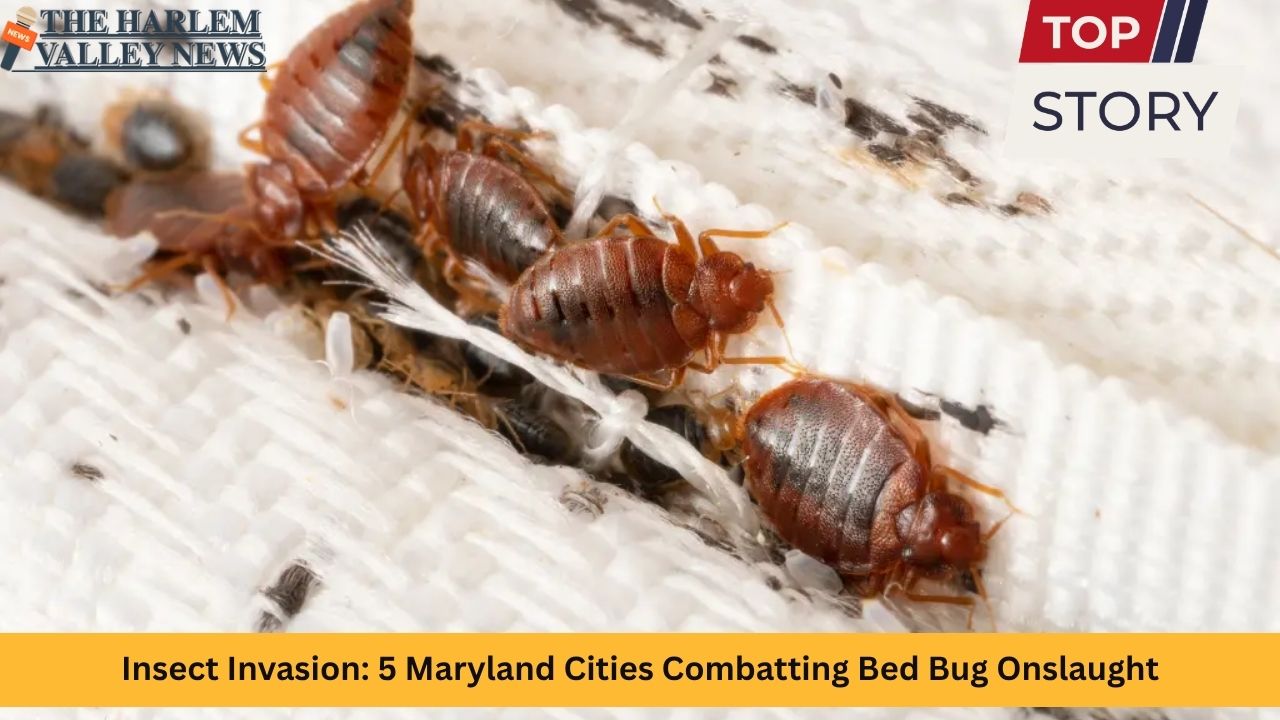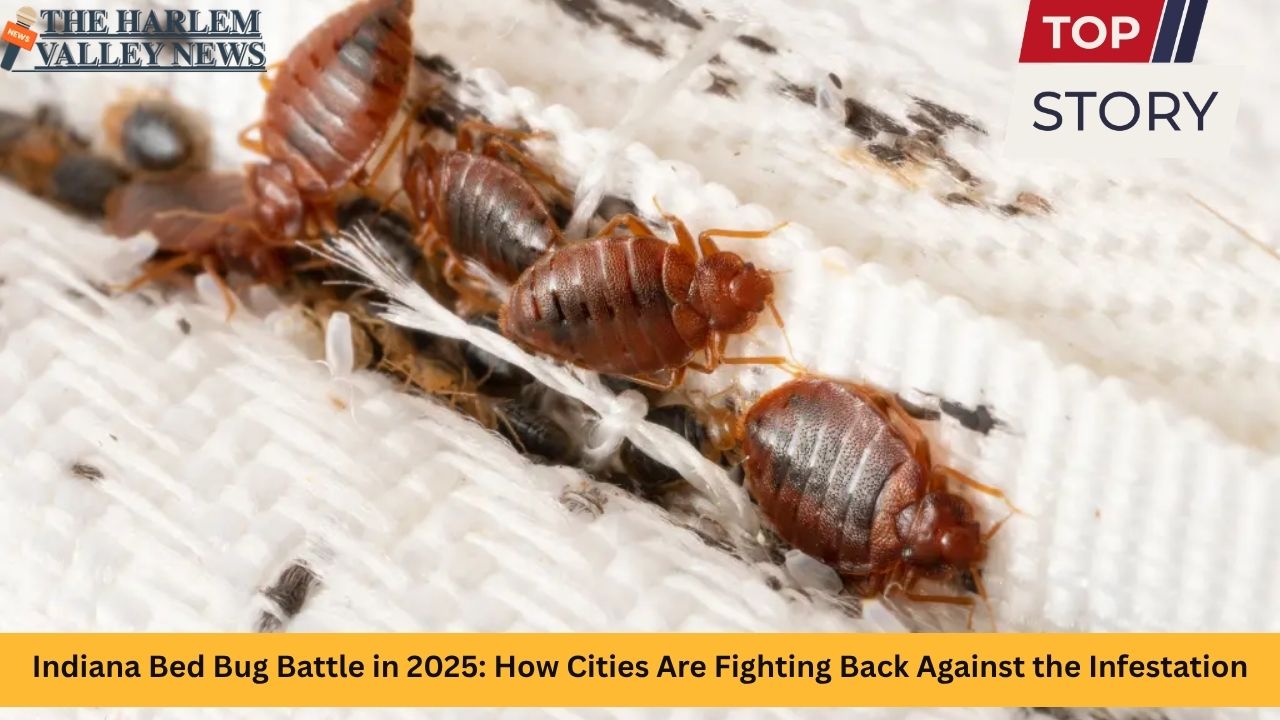Bed bugs—tiny, elusive, and relentless—have made a formidable return in urban America in recent years, turning up in homes, hotels, apartments, and even public spaces. Maryland, a state celebrated for its vibrant cities and historic locales, has found itself squarely in the crosshairs of this modern pestilence. As these blood-hungry insects multiply in both population and audacity, cities across Maryland are taking up the fight. This article uncovers how five Maryland cities—Baltimore, Columbia, Frederick, Ocean City, and Annapolis—have become epicenters in a growing bed bug invasion and explores the proactive measures being launched to protect residents, visitors, and local economies.
The Silent Spread: Understanding the Bed Bug Problem in Maryland
Bed bugs are deceptively small, typically the size of an apple seed, but their impact is anything but minor. Not only do they cause discomfort and sleepless nights, but infestations can carry psychological, social, and economic consequences. These pests are ingenious hitchhikers, passing easily from hotels to homes in suitcases, clothing, and even on public transit. Their resurgence in the last decade has been attributed to increased travel, urban density, resistance to common pesticides, and the exchange of secondhand goods.
Maryland’s unique blend of busy urban centers, historic housing, university towns, and bustling tourist destinations has created ideal conditions for the bed bug population to establish and flourish. Some cities have emerged as ground zero for the fight against the invasion. Let’s journey through the stories and strategies of five Maryland cities currently at the frontlines.
Baltimore: Maryland’s Bed Bug Battlefield
Bed Bug Capital of Maryland
Baltimore consistently ranks as one of the most bed bug-infested cities in the United States. At its peak, Baltimore topped national rankings and has routinely appeared in the top 20 in national reports. This city’s dense population, rich tourism industry, and abundance of multi-unit residences make it an easy target for outbreaks. The Bed Bug Registry has received hundreds of complaints from hotels and residential buildings, highlighting the pervasiveness of the problem, while pest management professionals cite Baltimore as a high-service area for extermination requests.
Key Statistics and Local Impact
-
Baltimore has placed as high as 8th in national bed bug rankings and regularly maintains a spot in the top 20, confirming it as a hotspot regionally and nationally.
-
In one notable year, the city health department received over 38 bed bug complaint calls in a single month—an indicator of persistent community concern.
-
Large numbers of reports originate from both residential and hospitality sectors, suggesting that the bed bug problem spans all parts of the city’s economy.
How Baltimore is Fighting Back
The Baltimore City Health Department does not operate a direct bed bug extermination service but publishes detailed guidance to empower residents and property owners. The focus is on awareness, early detection, and professional intervention. Here’s how city leaders and experts guide the defensive effort:
-
Inspection and Detection: Residents are urged to check mattress seams, headboards, and cracks for signs of bed bugs, such as blood spots or cast skins.
-
Professional Pest Control: The city emphasizes hiring licensed pest management professionals who can perform thorough inspections, targeted treatment, and necessary follow-ups.
-
Public Awareness Campaigns: Educational resources, online materials, and outreach events instruct the public in identifying bed bugs and preventing their spread.
-
Sanitization and Prevention: The city recommends reducing household clutter, using protective mattress encasements, frequently vacuuming, and being cautious with secondhand furniture.
Despite continuous challenges, Baltimore’s multipronged approach—anchored by public health messaging and partnerships with pest control professionals—aims to stabilize and eventually reduce the bed bug burden citywide.
Columbia: Multi-Unit Residences in the Crosshairs
Urban Design, Unintended Consequences
Columbia, a planned community in Howard County, was designed to offer modern living with a focus on multi-unit residential complexes. Unfortunately, the very density that draws people to Columbia also facilitates the rapid spread of bed bugs. Ranking just outside the top 200 nationally for bed bug problems, Columbia faces a quieter, but no less significant, urban pest challenge.
Statistics at a Glance
-
Columbia has featured as high as 218th in national bed bug infestation reports—less severe than Baltimore, but still notable for a city its size.
-
Infestations are found mainly in apartment communities, where bed bugs can move through adjoining walls and shared infrastructure.
Columbia’s Strategic Approach
Recognizing its unique risk profile, Columbia stresses vigilance in multi-unit living environments. The town’s strategies include:
-
Tenant Outreach: Property managers and landlords distribute informational resources in collaboration with health officials.
-
Routine Inspections: Landlords are encouraged, and in some cases required by lease, to carry out regular checks of units and common areas.
-
Intervention Policies: When bed bugs are discovered in one unit, property managers often expand treatment to neighboring units to stop horizontal migration.
-
Preventive Practices: Residents are advised to keep homes clutter-free, use mattress covers, and think twice before bringing secondhand furniture into apartments.
Columbia’s proactive property management culture and resident education campaigns have helped keep outbreaks in check, but challenges remain, especially in older complexes.
Frederick: Early Detection in a Historic Context
A Manageable, Growing Concern
Frederick, a picturesque city known for its historic architecture and vibrant downtown, sits further down national rankings for bed bugs but is by no means immune. Typically ranking in the 350s on national reports, Frederick experiences episodic outbreaks that are most closely tied to its hospitality sector and residential neighborhoods with older housing stock.
Stats and Community Impact
-
Frederick currently ranks around 358th for bed bug issues in the United States.
-
Local pest control providers cite hotel issues as a leading call driver, but infestations also crop up in homes, requiring whole-neighborhood vigilance.
Frederick’s Frontline Defense
Frederick’s lower, yet notable, bed bug profile has given it a unique vantage point—catch problems early, and prevent them from escalating:
-
Hotel and Airbnb Protocols: Hoteliers are trained to inspect rooms between stays, use protective mattress covers, and immediately treat any discovered infestation.
-
Community Reporting: Residents are encouraged to report suspected bed bug activity to local health authorities and property owners.
-
Promoting Early Action: Messaging highlights the importance of early professional intervention to avoid larger outbreaks.
Frederick’s blend of historic preservation with modern pest-control science aims to protect both its heritage and its hospitality reputation.
Ocean City: Tourism and the Bed Bug Boom
Seasonal Surges Pose Persistent Risks
Ocean City, Maryland’s flagship seaside destination, draws millions of visitors annually. The influx of tourists means a constant churn in hotel occupancy—and a steady parade of luggage, clothes, and belongings that serve as potential bed bug carriers. Ocean City’s bed bug challenges are tightly tied to its tourism economy.
Tourism-Connected Trends
-
Bed bug outbreaks here are highly seasonal—spiking during summer months and special event weekends.
-
Most cases originate in hotels, motels, and vacation rentals, especially high-turnover properties with less time for deep cleaning between guests.
Community Response in Ocean City
City officials and the tourism sector have doubled down on prevention and rapid response:
-
Rigorous Room Inspections: Hotels, motels, and vacation rentals conduct checks for bed bugs between every guest stay.
-
Staff Training: Staff are trained to recognize signs of bed bugs and report suspicions immediately for thorough treatment.
-
Guest Education: Information cards in rooms advise guests on looking for bed bugs upon arrival and encourage immediate notification of any issues.
-
Proactive Pest Control: Establishments frequently schedule professional exterminator visits, even preemptively, during peak travel seasons.
Ocean City has shown that aggressive, systematic intervention in the hospitality sector can make the difference between isolated cases and uncontrollable outbreaks.
Annapolis: Historic Charm, Modern Pest Menace
Old Buildings, New Problems
Annapolis, Maryland’s capital and home to the United States Naval Academy, boasts some of the state’s oldest and most beautiful buildings. Unfortunately, age comes with hidden perils—numerous cracks and crevices make perfect sanctuaries for bed bugs. Annapolis faces ongoing challenges balancing the preservation of historic structures with the demands of modern pest control.
Unique Challenges in Annapolis
-
Historic homes and inns, with decades or centuries-old woodwork, provide prime real estate for hidden bed bug populations.
-
As a destination for tourists, scholars, and state officials, the city’s hotels and B&Bs face constant exposure to bed bug “hitchhikers.”
How Annapolis is Responding
The city leans heavily on integrated pest management in addition to strict building maintenance:
-
Owner Education: Historic property owners receive special instruction on pest-proofing without damaging landmarks and maintaining vigilance through regular inspections.
-
Public Awareness: Local campaigns teach residents and business owners to spot bed bugs and call for help at the first sign of trouble.
-
Support for Renters: Legislative efforts, such as requiring landlords to disclose bed bug histories in rental units, empower new tenants to make informed choices and urge landlords to take prompt action.
Through a mix of regulatory innovation, historic preservation awareness, and robust community messaging, Annapolis is forging a path to protect its historic legacy and its people from the bed bug threat.
The Human Toll: Bed Bugs Beyond the Bite
While the visible symptoms of bed bug bites—itchy welts and red marks—are unpleasant, the true impact is far-reaching:
-
Sleep Disturbance: Infestations can leave residents exhausted and anxious, affecting productivity and quality of life.
-
Mental Health Strain: The stress of recurring infestations, social stigma, and continuous monitoring can contribute to heightened anxiety and sleep disorders.
-
Economic Impact: Families may spend hundreds or even thousands of dollars on treatment, replacing infested furniture and missed work.
This is why citywide efforts focus as much on empowerment and support as on eradication.
Statewide Solutions: Maryland’s Legislative Push Against Bed Bugs
Recognizing the importance of a coordinated response, Maryland state lawmakers have introduced bills aimed at clarifying landlord and tenant responsibilities, mandating inspections, and requiring disclosure of bed bug histories for rental units. These legal frameworks are designed to support both renters and property owners, ensuring rapid, fair, and effective interventions while reducing disputes and prolonged infestations.
Proposed measures include:
-
Landlords required to inspect and treat units promptly after complaints.
-
Mandating landlords to disclose recent bed bug incidents to prospective tenants.
-
Providing legal recourse for tenants who suffer financial loss from unresolved infestations.
These efforts underscore a growing consensus that bed bug infestations are not just a nuisance but a statewide housing and public health issue.
Tips for Maryland Residents and Travelers
Vigilance is the most effective weapon in the war on bed bugs. Here’s what everyone can do:
-
Inspect hotel rooms by lifting mattress corners and checking seams, behind headboards, and inside nightstands.
-
Keep luggage elevated and away from beds and soft furnishings.
-
Avoid bringing upholstered furniture found on the curb or at yard sales directly into your home.
-
Wash and dry clothes on high heat after travel or exposure to any infested area.
-
At the first sign of bed bugs—bites, rust-colored spots, or small black dots—consult a licensed pest control professional.
Conclusion
Maryland’s battle with bed bugs demonstrates that no city—large, small, historic, or new—is immune to this insect invasion. From bustling Baltimore to historic Annapolis, each city has had to develop its own blend of public awareness, professional intervention, and community engagement. The road to bed bug eradication is long, requiring vigilance and cooperation at every level. With new laws, empowered residents, and cutting-edge treatment strategies, Maryland is showing that even the most relentless pests can be matched with resolve and ingenuity. The fight continues, but the future promises hope: a Maryland where restful nights and peace of mind can once again be taken for granted.












Leave a Reply